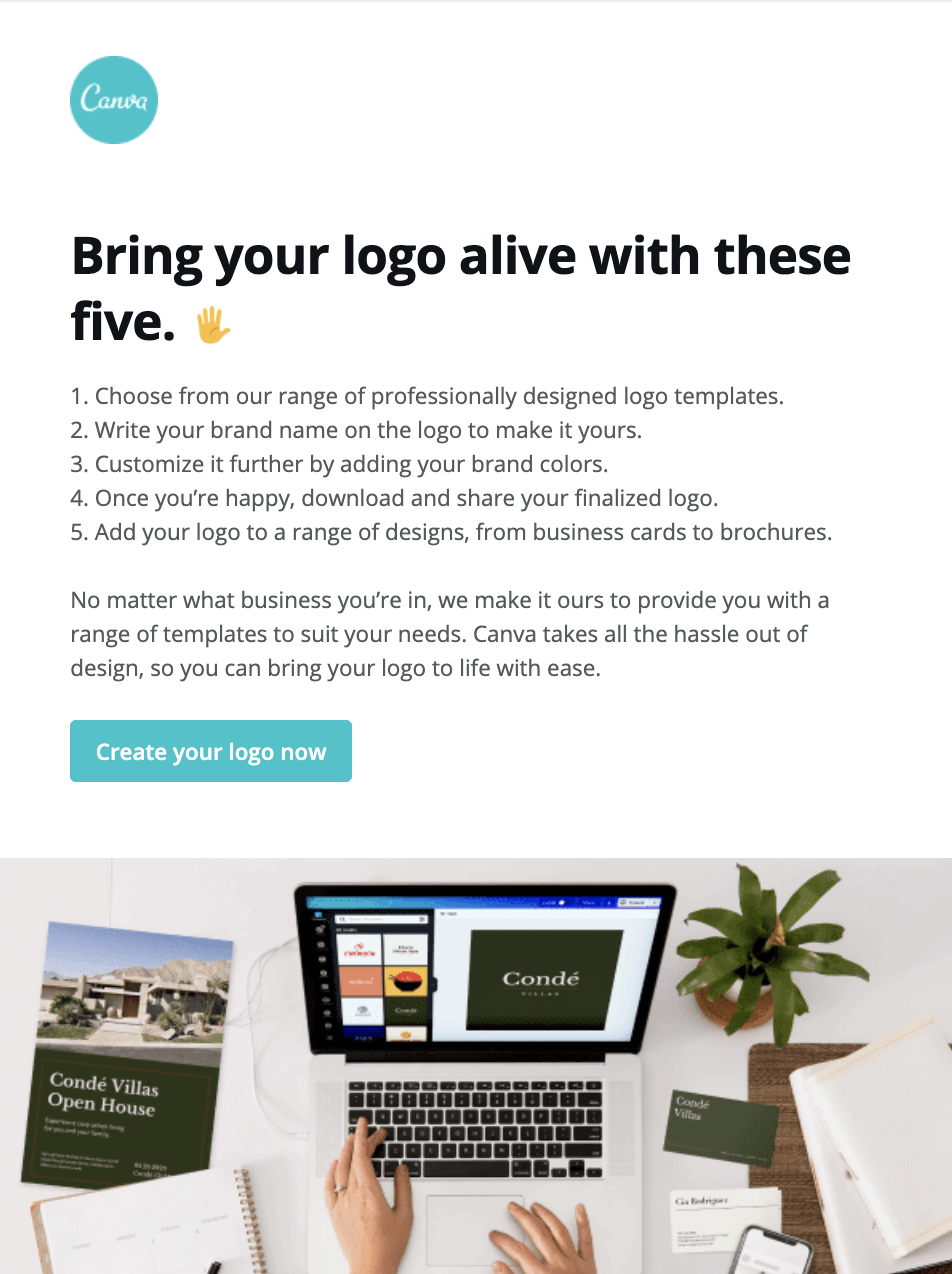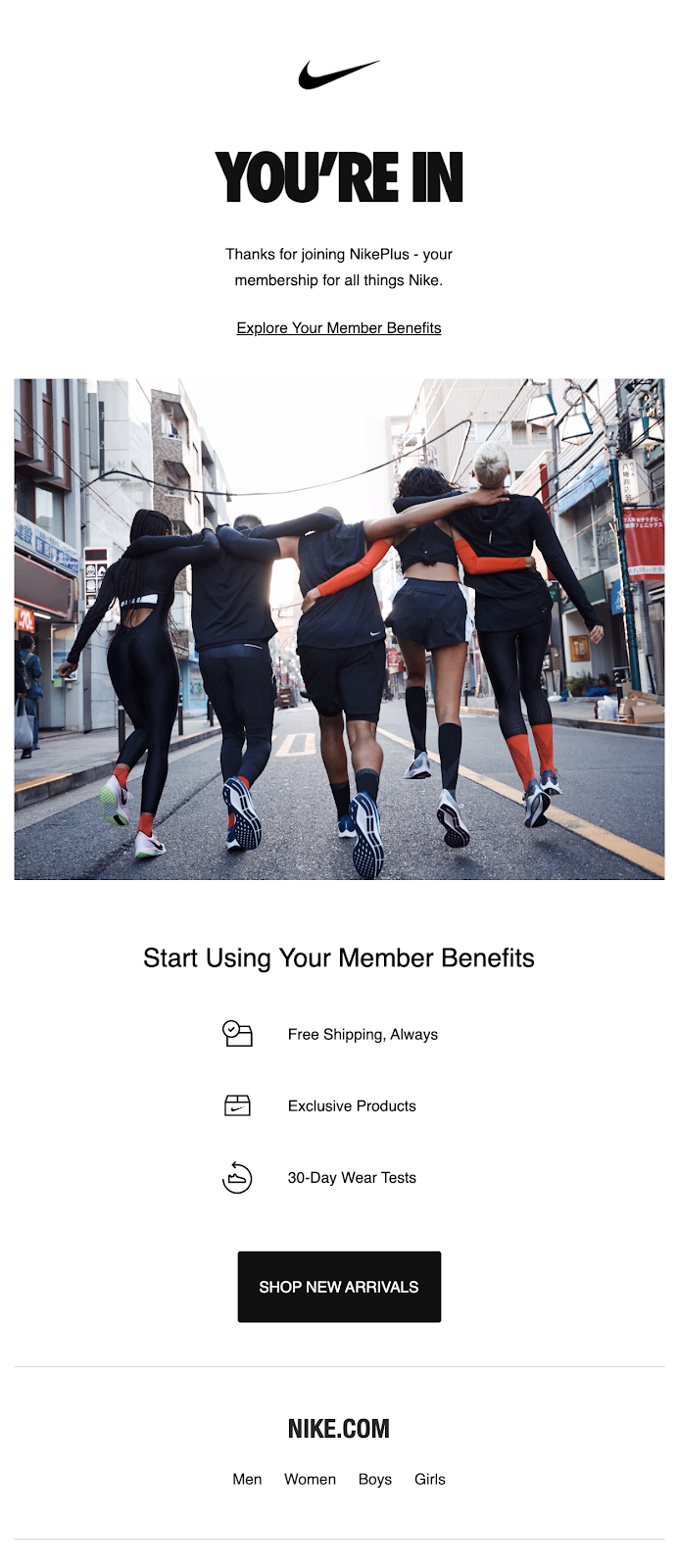B2C Email Marketing Best Practices To Grow Your Sales (With Examples)
Email marketing sometimes gets a bad rep. It is often confused with writing emails that start with, ‘I want to thank you for your patronage to our esteemed and leading company… zzz…’ Or emails that are sent without context.
Yes, a cute turtle at a beach in Italy dies every time someone sends that! So don’t.
Instead, let’s see how you can create an email marketing strategy that will help you scale, build relationships with your subscribers, and eventually make them your customers/fans. And we will particularly focus on B2C email marketing in this blog.
If in the past you have associated email marketing with negative words like spam, hard work, boring. I want you to replace those terms with three new ones - revenue, visibility, and customer relationship. Don’t take my word for it. Just keep reading & discover why & how.
Table of Contents
Difference between B2B & B2C emails
Before we move on, if you are confused about why we are talking particularly about B2C & not B2B or just email marketing, then let me tell you that there is a world of difference between how emails work in B2C & B2B worlds.
Length of buying cycle is different: In B2C, the purchase is somewhat impulsive and it doesn’t involve many stakeholders as compared to a B2B process where approval from many departments might be required. So, B2C email sequences have a short journey compared to B2B.
Layout: B2C consumers are especially responsive to visual content and less likely to spend their time reading copy-heavy, lengthy emails. In a B2B email however, you can expect them to care less about how it looks and more about the value, proposition, and the next step.
The tone of writing: With B2B businesses, the tone will customarily be more informative, objective, and less casual, (however, there are exceptions to this and B2B brands have started to get some humor in their emails) but B2C brands don’t use corporate jargon or technical terminology. They are more casual and target market the emotional side of the readers.
Two Kinds of Email Campaign
Now, that the confusion is out of the way, let’s talk about two kinds of emails we recommend for your B2C business:
- Drip Campaigns: Designed to drip information to the customer over a period of time while providing value and subtly telling how their solution can solve their problem
- Sales Campaigns: Designed to close a sale
Drip Campaigns
These are also called nurture campaigns because you are nurturing a relationship with your subscribers & earning their trust.
While people do buy on impulse, they don’t just buy from anyone. They buy from the business which is on top of their mind, which they can trust. Trust builds from familiarity, and one way to get familiar in their minds is to be in their inbox with valuable content, week after week.
Most brands forget to do this and just focus on pushy emails. I believe, to play the long game, nurture emails are necessary.
You may send a sales email a number of times without any purchase, but if you’re providing enough value in your nurture emails, they will stay subscribed even if they aren’t interested in making a purchase right now. But when the time is right and your email is there, they will make the purchase.
An easy to use and affordable option to plan and execute drip campaigns is SendX.
Ideas for drip emails:
1. Provide them value:
You can write tips or how-to-do guides. You can make it visual and include GIFs if you are showing a process.
Canva does this by sending you tips every week.

2. Provide content for inspiration:
This works wonders for the travel industry. If you have a travel business, you need to stoke that fire of escaping. Byond does that really well with their content emails.

3. Talk about a problem & how you help solve it:
People keep on going with their lives believing things which might not be true and they might be facing problems because of that. If you address that in your content and tell them how to get out of it, people are going to look forward to your emails.
They will ultimately ask you, ‘how do I solve it?’ and that’s when you can show them how with your product.
Mindvalley does that by introducing some nurture emails before they pitch the product to their audience. And it works very well for both their relationship building and sales.

You are providing a lot of useful content in your nurture emails. So it’s not for hard selling but you should subtly include a mention of your product.
This will help people make an association between the problems you address, and the solutions you provide. Hence they will turn to you in the future if they are faced with those problems.
Sales Campaigns
A sales campaign is designed to get the customer to buy your products or services. With nurture emails, you have created a value driven, friendly, business relationship with your readers. Business relationships involve transactions and sales emails are a way to ask for them to make that transaction.
The great thing about sales emails is that they can be written once and automated for as long as relevant.
Sales emails might not guarantee that 100% of your customers will buy, but at least some will… and that will happen because you pitched your product. And not everyone might buy as soon as you send that email with the ‘Buy now’ button. It might take a series of emails.
A good framework for a sales campaign can be:
- The problem you are solving: Identify one problem your product solves really well and describe how it does it. This is where the customer will relate to the problem and associate your product as a solution.
- Customer testimonials: This email will put social proof in place. Show your readers that others like themselves have ordered this product, found it helpful and are raving fans.
- Clear any objections: This email will invite people who are still on the edge of buying your product and have some questions. ‘Can I refund?’, 'Does it work if I am not a copywriter?’ etc etc. Answer these questions for them in the form of an FAQ.
- Product Announcement: Simply tell them about your product, some features, price and if there is any offer on it. Have a direct Call to Action to your sales page.
- Scarcity: If your product is a limited edition or the discount on it is going to expire soon, then this is the right time to remind people about that and finally push them to make a decision. If possible, also include a timer in your email to highlight time scarcity or last stock quantity to highlight limited edition scarcity.
B2C Email Marketing Best Practices
Segment Your Audience
Email segmentation is when you create different groups of your subscribers based on their past behaviors, and send contextual, relevant messages to each group.
You can segment based on these criteria:
- Subscribers who have not purchased anything yet
- Subscribers who have recently purchased
- Subscribers who downloaded the free lead magnet recently
- Subscribers who left unpurchased items in their cart
- Subscribers who have not opened your emails in a while
The concept of segmentation often follows an “if this, then that” pattern. For example: “If someone just downloaded your free lead magnet, then they get added to the welcome email sequence.”
Craft engaging emails
This includes focusing on both content & formatting.
Copy of your emails should be relatable, sans jargon that you might be using in your own team, and simple to read. Particularly in B2C campaigns, the copy should not appeal to logic but to emotion. That’s how people make a purchase. Although they think it’s a logical buy, it’s not.
Based on your industry you can decide whether to keep it text-heavy or very visual.
If your emails are text-heavy, make them scannable for the lazyweb to read. How?
- Format your content to have bullets, sections, and subheadings to help people who skim through the emails.
- If something can be expressed through an image or GIF, use it.
- Make your email responsive - meaning it should be readable and look nice on devices of almost any size - mobiles, desktops, and tablets.
Include clear CTAs
You might have a great email, amazing offer, and right timing but if you don’t lead people on what to do next, your emails are pointless.
So, CTAs - It can be a button or hyperlinked text that directs people to take action.
Best Practices for CTAs:
- Make CTA stand out with distinct colours. This will make your CTA stand out and thus easier for the reader to take action.
- Have ample white space around your CTA so that it’s easy to click on touchscreens
- You have to let the reader know you have an amazing product that you are willing to sell. So if the CTA copy requires you to say ‘Buy Now’, ‘Enroll Now’, ‘Add to Cart’. Do it. Don’t be shy to sell.
See this Nike email as example

Choose the right Email Service Provider
There are tons of email marketing software out there but only a few that are right for your business. Few things to look at before choosing one:
- Consider your business strategy
- Rank the features you need
- Determine your budget
- Look at delivery rates
- Check the customer support.
The goal of email marketing is to develop relationships and grow your business, so think about where your business will be in the next few years and make sure your ESP can scale with you.
I would suggest getting a trial of SendX.
It’s affordable, intuitive and trusted by 3000+ companies for their email marketing. You can take a free trial for 14-days and if you want someone to show you around, you can also book a demo. All without giving us your credit card or mother’s maiden name. Simple and hassle-free 14-day free trial.
FAQs
1) Sales emails seem to be ineffective for new subscribers. How can I overcome this?
For that, you need to plan a drip campaign. A drip campaign is a method used in direct marketing to acquire customers through lead nurture programs. It involves sending marketing information to prospects repeatedly over longer periods of time in order to nurture prospects or leads through the marketing funnel.
2) How can I make people look forward to receiving our content?
By providing value through drip emails, you can make your customers look forward to more of your content. A good way would be periodic newsletters that educate them, rather than just pitch for the product straightaway.
3) How will I know when the time is right to attempt a sale?
First, you need to have nurtured your leads for a while. Then, you need to design a sales campaign that is well structured, relevant, and matches your company’s brand.
4) I have subscribers at different stages of purchase cycle (those who are yet to make a purchase, those who have purchased etc), but I don’t want to schedule different email blasts for each set of subscribers. Is there a way I can send different emails to each set of such subscribers at once?
List segmentation is the answer. A well cleaned list, when segmented optimally can improve your email engagement, deliverability, and adds up to better email marketing execution.
5)I want to enable my recipients to take a positive & decisive action through my emails. But most times, they just read the email and never buy. How can I break this cycle?
Include clear CTAs that stand out with distinct colors, are easy to read with ample white space around them, and an explicit call-to-action button.
6) I want to build long time relationships with customers with whom I can get repeat business by sending repeat campaigns. What do you suggest?
Choose your ESP carefully by considering your business strategy, ranking the features you need, planning your budget, and checking for customer support. We suggest you go for a product like SendX which allows unlimited emails even to the same subscribers in different lists.


